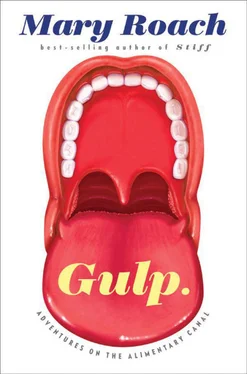Because it’s hard for people to gauge quality by flavor, they tend to gauge it by price. That’s a mistake. Langstaff has evaluated wine professionally for twenty years. In her opinion, the difference between a $500 bottle of wine and one that costs $30 is largely hype. “Wineries that sell their wines for $500 a bottle have the same problems as wineries that sell their wine for $10 a bottle. You can’t make the statement that if it’s low-cost it’s not well made.” Most of the time, people don’t even prefer the expensive bottle—provided they can’t see the label. Paul Wagner, a top wine judge and founding contributor to the industry blog Through the Bunghole, plays a game with his wine-marketing classes at Napa Valley College. The students, most of whom have several years’ experience in the industry, are asked to rank six wines, their labels hidden by—a nice touch here—brown paper bags. All are wines Wagner himself enjoys. At least one is under $10 and two are over $50. “Over the past eighteen years, every time,” he told me, “the least expensive wine averages the highest ranking, and the most expensive two finish at the bottom.” In 2011, a Gallo cabernet scored the highest average rating, and a Chateau Gruaud Larose (which retails from between $60 and $70) took the bottom slot.
Unscrupulous vendors turn the situation to their advantage. In China, nouveau-riche status-seekers are spending small fortunes on counterfeit Bordeaux. A related scenario exists here vis-à-vis olive oil. “The United States is a dumping ground for bad olive oil,” Langstaff told me. It’s no secret among European manufacturers that Americans have no palate for olive oils. The Olive Center—a recent addition to the Robert Mondavi Institute for Wine and Food Science, on the campus of the University of California at Davis—aims to change that.
It starts with tastings. I don’t know which vineyard first ushered wine-tasting off the palates of vintners and into the mouths of everyday consumers, but it was a stroke of marketing genius. Wine-tastings spawn wine enthusiasts, wine collecting, wine tourism, wine magazines, wine competitions, (wine addictions,)—all of it adding up to a multibillion-dollar industry. Olive trees grow in the same climate and soil conditions as grapes. The olive oil people have been up in Napa Valley all along, going, “Hey, how do we get a piece of this action?”
In addition to hosting tastings, the Olive Center has hired Langstaff to train a new UC Davis Olive Oil Taste Panel. Taste panels (or flavor panels, as they are more accurately called) have typically been made up of industry professionals. Langstaff wants to open it up to novices, for the simple reason that know-nothings are easier to train than know-it-alls. The center has a call for apprentice tasters on its website. The “tryouts” are coming up. At least one know-nothing will be there for sure.
THE OLIVE CENTER is smaller than its name suggests. It consists of a single office and a shared receptionist on the first floor of the Sensory Building at the Robert Mondavi Institute. Bottles of oil and canned olives line the tops of cabinets and have begun to colonize the wall-to-wall. There’s no room in the center to hold the tryouts, so they are taking place next door in the Silverado Vineyards Sensory Theater, the building’s lecture hall and classroom tasting facility. (Silverado helped fund it. Additionally, each seat has a sponsor, with the name engraved on a small plaque.)
Langstaff makes her entrance burdened like a pack mule. Three tote bags hang off her shoulders, and she wheels a multitiered cart crammed with oils, laptops, water bottles, and stacks of cups. She wears dun-colored pants, black sport sandals, and a short-sleeved shirt in the Hawaiian style, though without an island motif. She calls roll: twenty names. Of them, twelve will make the first cut, and six will go on to apprentice.
Langstaff lays out the ground rules for future apprentices: be here, be on time. Be agreeable. “We will be evaluating some nasty oils. You will have to put them in your mouth. [8] It could be worse. In 1984, goat-milk flavor panelists were enlisted by a team of Pennsylvania ag researchers to sleuth the source of a nasty “goaty” flavor that intermittently fouls goat milk. The main suspect was a noxious odor from the scent glands of amorous male goats. But there was also this: “The buck in rut sprays urine over its chin and neck area.” Five pungent compounds isolated from the urine and scent glands of rutting males were added, one at a time, to samples of pure, sweet goat milk. The panelists rated each sample for “goaty” “rancid,” and “musky-melon” flavors. Simple answers proved elusive. “A thorough investigation of ‘goaty’ flavor,” the researchers concluded, “is beyond the scope of this paper.”
For the good of science. For the good of olive oil. We are here to help the producers, to tell them, What attributes does the oil have, does it have defects, what can they do differently next year—treat the olives better, pick them at a different time, et cetera.” There will be no pay. No one will reimburse for the seven-dollar parking-garage fee. The existing panelists are known to have some prickle, to borrow an official olive-oil sensory descriptor.
“You may be thinking, wow , I really don’t want to be on this thing.” The faint of heart are invited to pack up and go. No one moves.
“All right then.” Langstaff surveys the room. “Shields up.” She is referring to removable panels used to partition the room’s long tables into private tasting booths. This way, you aren’t influenced by the facial expressions (or test answers) of the people seated next to you. Hired sensory-science students move along the rows, pulling the panels out of slots in the front of the tables and sliding them into place, like helpers on a game-show set.
A plastic tray is set in front of each of us. The trays hold eight small lidded cups: our first test. Each cup holds an aromatic liquid. Swirl, sniff, identify. A few seem easy: almond extract, vinegar, olive oil. Apricot required two full minutes of deep thought. Others remain unfamiliar no matter how many times and how deeply I sniff. According to the journal Chemical Senses , a “typical human sniff” has a duration of 1.6 seconds and a volume of about two cups. I’m sniffing twice as hard. I’m sniffing the way clueless Americans try to make non-English speakers understand them by shouting. One aroma will turn out to be olive brine—the water from a bottle or can of olives. Reflecting the preponderance of olive people trying out today, an impressive thirteen out of twenty get this right.
Next is a “triangle test”: three olive-oil samples, two of them identical. Our task is to identify the odd one out. We are given paper cups of water for rinsing and, for spitting, large red plastic cups of the kind that litter the lawns and porches of frat houses on weekend mornings. The red here today perhaps serving as a warning: Do not drink! Langstaff sits at the front of the room, reading a newspaper.
It’s not going well here in the B.R. Cohn Winery seat. All three oils taste the same to me: a hint of freshly mown grass, with a peppery finish. I do not detect apple, avocado, melon, pawpaw, old fruit bowl, almond, green tomato, artichoke, cinnamon, cat urine, hemp, Parmesan cheese, fetid milk, Band-Aid, crushed ants, or any other olive-oil flavor, good or bad, that might set one of these oils apart. With time running out, I don’t bother spitting. I’m sipping oil like it’s tea. Langstaff glances at me over her glasses. I wipe my lips and chin with my palm, and a shiny smear comes away.
Our final challenge is a ranking test: five olive oils of differing degrees of bitterness. This proves a challenge for me, as I would not have described any of them as bitter. All around me, people make sounds like ill-mannered soup-eaters, aerating the oils to free the aromatic gases. I’m doing a mnyeh-mnyeh-mnyeh Bugs Bunny thing with my tongue, but it’s not helping. Well before the test period ends, I stop. I do something I’ve never done in my entire overachieving life. I give up and guess. I do this partly at the behest of my stomach, which is struggling to cope with the unusual delivery of a sizable amount of straight olive oil.
Читать дальше












